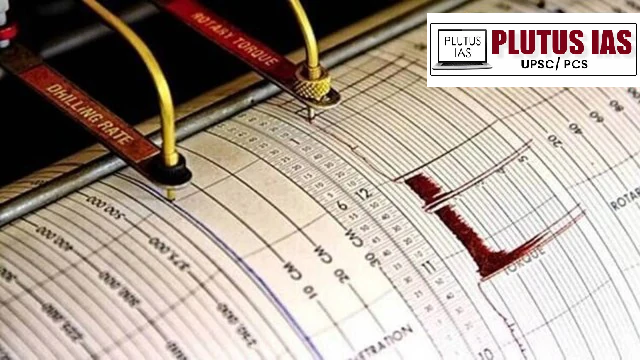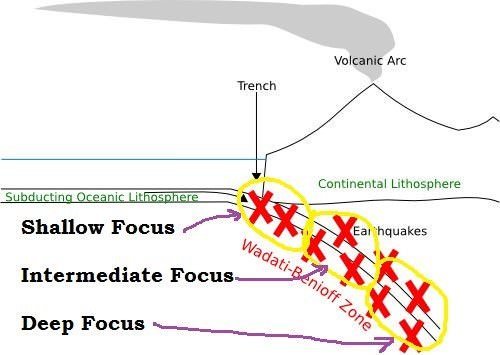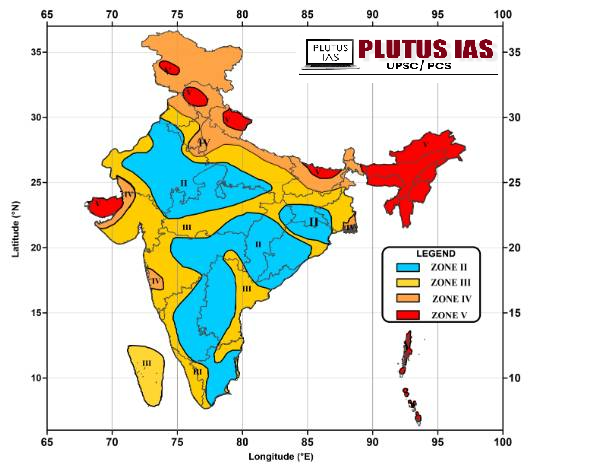20 Feb Earthquake Risk Reduction: Challenges and Strategies
SYLLABUS MAPPING:
GS-3- Environment-Earthquake Risk Reduction: Challenges and Strategies
FOR PRELIMS
Classification of earthquakes based on their occurrence and earthquake zoning Map of India. Earthquake key facts
FOR MAINS
Why in the news?

What is an Earthquake?
An earthquake is the sudden shaking or movement of the Earth’s surface caused by the release of energy from within the Earth’s crust. This energy is typically stored when masses of rock are strained against one another, and when the rocks fracture or “slip,” the stored energy is released in the form of seismic waves. These waves travel through the Earth, causing the ground to shake, sometimes violently. Earthquakes usually occur along fault lines, which are fractures in the Earth’s crust where rocks on either side have moved relative to one another. The movement and release of energy at these fault lines can cause significant ground shaking, damage to structures, and sometimes even tsunamis if the quake occurs underwater.
Type of Earthquake
1. Shallow Earthquakes:
Depth: Occurs at depths of less than 70 kilometres (km).
Commonality: The most frequent type of earthquake.
Energy Release: Release about 75% of the total energy produced by earthquakes.
Damage: These are typically the most destructive to buildings and infrastructure because of their proximity to the Earth’s surface.
2. Intermediate Earthquakes:
Depth: Occurs at depths between 70–300 km.
Alternate Name: Also known as mid-focus earthquakes.
Impact: While not as destructive as shallow earthquakes, they can still cause significant shaking, depending on the location.
3. Deep Earthquakes:
Depth: Occurs at depths of 300–700 km.
Alternate Name: Also called deep-focus earthquakes.
Destructive Nature: These are rarely destructive due to their depth, as the seismic waves lose energy by the time they reach the surface.
Location: Typically happens in subduction zones where one tectonic plate is being forced beneath another.

Earthquakes Zone: Mapping
The National Center for Seismology (NCS) monitors seismic activities in India, focusing on earthquake detection, early warning systems, and maintaining national seismological networks. It also conducts seismic hazard studies and post-earthquake field studies.
Zone 5: Highest risk (MSK IX+), with a zone factor of 0.36. Includes regions like Kashmir, the Himalayas, andthe Andaman Islands.
Zone 4: High risk (MSK VIII), with a zone factor of 0.24. Includes Delhi, Jammu & Kashmir, and parts of Uttar Pradesh.
Zone 3: Moderate risk (MSK VII), with a zone factor of 0.16. Covers cities like Mumbai, Chennai, and Kolkata.
Zone 2: Low risk (MSK VI), with a zone factor of 0.10. Includes cities like Bangalore and Hyderabad.
Zone 1: No current areas classified, representing very low seismic risk, potentially covering stable regions like the Deccan Plateau.

What are the reasons for the recent Delhi earthquake?
The recent earthquake in Delhi, with a magnitude of 4.0, was not caused by the collision of tectonic plates, according to the National Center for Seismology (NCS). While Delhi lies in Seismic Zone IV, which is prone to earthquakes, the specific cause of this event wasn’t linked to a plate collision but rather to the local geological conditions.
Several factors contribute to the seismic activity in Delhi:
1. Tectonic Plate Movements: The Indian plate is colliding with the Eurasian plate, causing the region to experience seismic activity. This collision occurs along the Himalayan region and influences the seismicity in surrounding areas, including Delhi.
2. Delhi-Hardwar Ridge: The earthquake is thought to be associated with the Delhi-Hardwar Ridge, a major geological structure that extends beneath the alluvial plains of the Ganga Basin, coinciding with the Aravali Mountain belt. This ridge contributes to seismic activity around Delhi.
3. Local Faults and Geological Features: The region around Delhi has faults and geological structures that can cause smaller earthquakes due to the release of built-up energy. These localized movements do not necessarily involve major tectonic shifts but can still generate tremors.
NDMA guideline on earthquakes:
1. Preventive Measures
Seismic Risk Assessment: Assess and identify vulnerable areas in earthquake-prone regions.
Earthquake-Resistant Construction: Ensure new buildings follow seismic safety codes (IS 1893:2002) and retrofit older buildings.
Zoning and Land Use: Avoid construction in high-risk zones and enforce stricter building codes.
Public Awareness: Educate the public about earthquake risks and safety protocols.
Emergency Plans: Develop preparedness and evacuation plans for communities and institutions.
Infrastructure Retrofit: Strengthen existing infrastructure to meet earthquake-resistant standards.
2. During the Earthquake
Drop, Cover, and Hold On: Drop to the ground, take cover under furniture, and hold on until the shaking stops.
Stay Indoors: Remain inside, away from windows and heavy objects.
Move to Open Areas: If outside, move to open areas away from buildings and power lines.
Use Stairs, Not Elevators: Evacuate using stairs, not elevators.
Stay Calm: Remain calm and avoid panic to ensure safety.
3. Post-Earthquake Measures
First Aid: Provide first aid to the injured and call for medical help.
Inspect Damage: Check for structural damage before re-entering buildings.
Prepare for Aftershocks: Be ready for possible aftershocks.
Follow Official Instructions: Listen to authorities for updates and instructions.
Coordinate Relief: Organize rescue and relief operations, provide shelter, and restore services.
Mental Health Support: Offer psychological support to survivors.
Conclusion
The recent 4.0 magnitude earthquake in Delhi has raised concerns about the region’s seismic vulnerability. Although no significant damage or injuries were reported, the quake, originating locally near Dhaula Kuan, highlights the potential risks in an area that lies within Seismic Zone IV. Delhi’s geological setting, including factors like the Delhi-Hardwar Ridge and local fault lines, can contribute to seismic activity. The National Center for Seismology (NCS) has assured that this event was not caused by a plate collision but was likely due to local geological conditions.
Download Plutus IAS Current Affairs (Eng) 20th Feb 2025
Prelims Questions:
Q. Which of the following statements are correct about Delhi’s seismic activity?
1. Delhi is located in Seismic Zone IV, which indicates a high risk of earthquakes.
2. The recent earthquake in Delhi was caused by the collision of tectonic plates.
3. The Delhi-Hardwar Ridge contributes to seismic activity in the region.
Select the correct answer using the code given below:
a) 1 and 2 only
b) 2 and 3 only
c) 1 and 3 only
d) 1, 2 and 3
Answer: C
Mains Questions:
(250 words, 15 marks)




No Comments